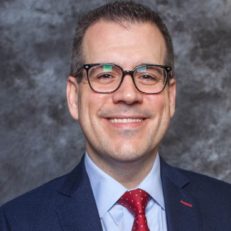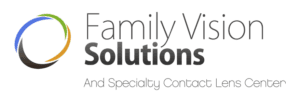Dr. Charrier shares how the sMap3D™ helped his practice reduce chair time and streamline complex lens fittings.
“Consistent with our mission of providing the most advanced treatment options to our highly complicated patient base, I believe the sMap3D is an integral treatment option for our patients,” said Dr. Charrier.
The Visionary Optics team spoke with Dr. Randy Charrier, OD at Family Vision Solutions and Specialty Contact Lens Center in Houston, Texas about how implementing the sMap3D™ in his practice has improved patient care, reduced office visits, and refined the overall lens fitting process. Family Vision Solutions was involved in the beta testing of the sMap3D™ technology, and Dr. Charrier said its benefits were evident from the beginning.
“Even at the early stages, it was clear the sMap3D technology was accurate and valuable,” he said. “The mapping of the sclera provided answers to previously unexplained problems. And with the introduction of the free-form Latitude® lens, owning this instrument provides a high-quality alternative to the EyePrintPro.”
According to Dr. Charrier, Visionary Optics lenses routinely outperform those of competitors, and he has worked with them since 2008.
“I have brought in lenses from all the big manufacturers, but I consistently come back to Visionary Optics,” he said. “Their business practices, costs, and quality control are consistently excellent. You could seriously do no better.”
Read about how the sMap3D™ has led to benefits for both patients and Dr. Charrier’s practice:
Case Study
The Challenge
We have many patients who need complicated treatment options. Before the sMap3D™, patients needed multiple office visits to find the right lens fitting. Sometimes the fit appeared to be good, but the lens was uncomfortable.
The Solution
The sMap3D™ reduced the number of office visits and increased patients’ lens comfort. It allows improved lens centration without extensive diagnostic lens fitting. Overall, we need less chair time to achieve the final lens, and patients have the perception of using the latest and most advanced technology in our office. It helps set our practice apart from others in the area as an advanced scleral lens practice.
The Results
There are several, but one case that stands out is a patient I fit in both the EyePrintPro and the Latitude®. His ocular surface was highly irregular due to having an aqueous tube shunt, a patch graft for a tube erosion, corneal distortion from radial keratotomy, and a scleral buckle. In the end, the fit of the two lenses were very similar. The surprise was in the fact that I achieved the final lens much faster with the Latitude®. It is amazing that this technology has come far enough to compete with impression-based fitting.







